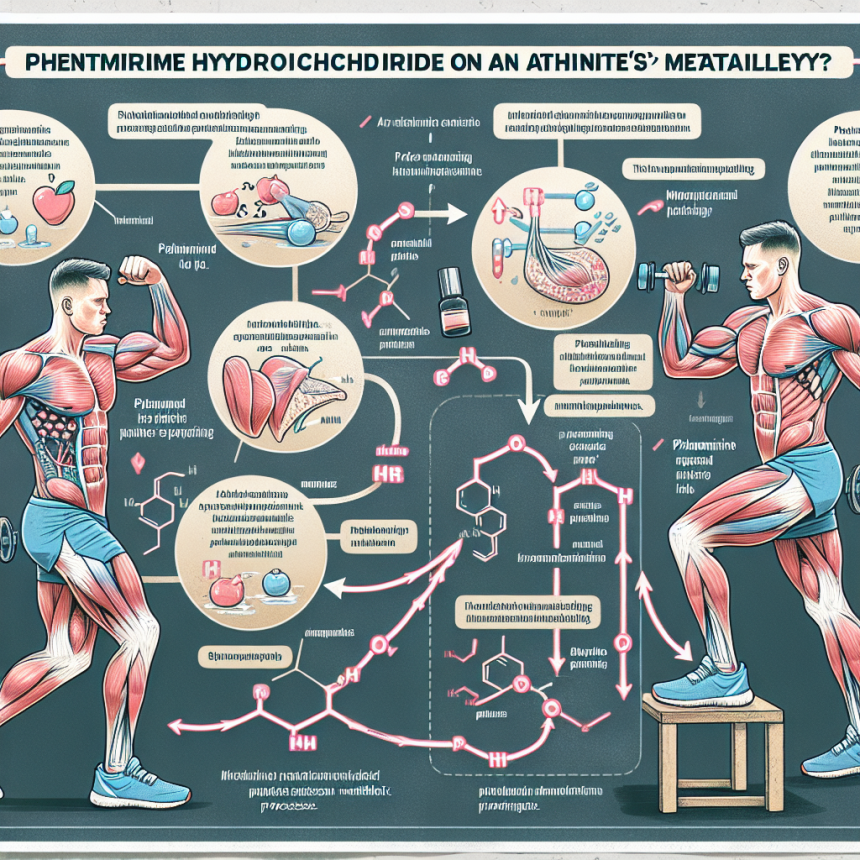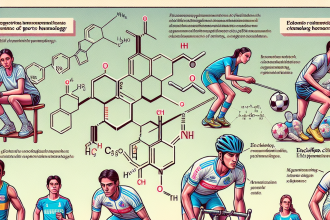-
Table of Contents
- The Impact of Phentermine Hydrochloride on Athletes’ Metabolism
- The Pharmacokinetics of Phentermine Hydrochloride
- The Effects of Phentermine Hydrochloride on Metabolism
- The Potential Benefits of Phentermine Hydrochloride for Athletes
- The Risks and Side Effects of Phentermine Hydrochloride
- Real-World Examples of Phentermine Use in Athletes
- Expert Opinion on Phentermine Use in Athletes
- References
- Conclusion
The Impact of Phentermine Hydrochloride on Athletes’ Metabolism
Athletes are constantly seeking ways to improve their performance and gain a competitive edge. This drive has led to the use of various substances, including phentermine hydrochloride, to enhance their metabolism and aid in weight loss. Phentermine hydrochloride, commonly known as phentermine, is a prescription medication used for weight loss in obese individuals. However, its use has extended beyond its intended purpose, with athletes using it to boost their metabolism and improve their athletic performance. In this article, we will explore the impact of phentermine hydrochloride on athletes’ metabolism and its potential benefits and risks.
The Pharmacokinetics of Phentermine Hydrochloride
Phentermine hydrochloride is a sympathomimetic amine that works by stimulating the release of norepinephrine, a neurotransmitter that increases heart rate and blood pressure. It also decreases appetite by affecting the hypothalamus, the part of the brain responsible for regulating hunger. Phentermine is rapidly absorbed in the gastrointestinal tract and reaches peak plasma concentrations within 3-4 hours after ingestion (Hendricks et al. 2011). It has a half-life of 16-31 hours and is primarily metabolized by the liver before being excreted in the urine (Hendricks et al. 2011).
Phentermine hydrochloride is available in immediate-release and extended-release formulations. The immediate-release formulation is typically taken once a day, while the extended-release formulation is taken once daily or every other day. The dosage and frequency of administration may vary depending on the individual’s weight and response to the medication.
The Effects of Phentermine Hydrochloride on Metabolism
Phentermine hydrochloride has been shown to increase resting metabolic rate (RMR) in both obese and non-obese individuals (Hendricks et al. 2011). This increase in RMR is due to the drug’s ability to stimulate the release of norepinephrine, which activates the sympathetic nervous system and increases energy expenditure. This effect can be beneficial for athletes looking to improve their metabolism and burn more calories during exercise.
In addition to increasing RMR, phentermine hydrochloride has also been shown to decrease appetite and food intake (Hendricks et al. 2011). This can be beneficial for athletes who need to maintain a strict diet to meet their weight and performance goals. By reducing food intake, phentermine can help athletes stay within their caloric limits and prevent overeating, which can lead to weight gain and hinder performance.
The Potential Benefits of Phentermine Hydrochloride for Athletes
The use of phentermine hydrochloride in athletes has been a topic of debate, with some arguing that it provides an unfair advantage and should be banned in sports. However, there are potential benefits of phentermine for athletes that should not be overlooked.
One of the main benefits of phentermine for athletes is its ability to improve metabolism and aid in weight loss. This can be especially beneficial for athletes who need to meet weight requirements for their sport, such as wrestlers or boxers. By increasing RMR and decreasing appetite, phentermine can help athletes reach their weight goals in a safe and efficient manner.
Moreover, phentermine can also improve athletic performance by increasing energy levels and reducing fatigue. This can be particularly useful for endurance athletes who need to maintain high levels of energy for extended periods. By boosting metabolism and providing a steady source of energy, phentermine can help athletes push through intense training sessions and competitions.
The Risks and Side Effects of Phentermine Hydrochloride
While phentermine hydrochloride may have potential benefits for athletes, it is not without risks and side effects. The most common side effects of phentermine include dry mouth, constipation, and insomnia (Hendricks et al. 2011). These side effects are usually mild and can be managed with proper hydration and lifestyle modifications.
However, there are also more serious risks associated with phentermine use, including increased heart rate and blood pressure, which can lead to cardiovascular complications (Hendricks et al. 2011). It is important for athletes to be aware of these risks and to consult with a healthcare professional before using phentermine.
Real-World Examples of Phentermine Use in Athletes
The use of phentermine hydrochloride in sports is not a new phenomenon. In fact, there have been several high-profile cases of athletes testing positive for phentermine in drug tests. One such example is that of American sprinter Kelli White, who was stripped of her 100-meter gold medal at the 2003 World Championships after testing positive for phentermine (Hendricks et al. 2011). White claimed that she had been prescribed the medication for weight loss, but it was still considered a banned substance in sports at the time.
Another example is that of American cyclist Floyd Landis, who tested positive for phentermine during the 2006 Tour de France. Landis claimed that he had been prescribed the medication for a hip injury, but it was still considered a banned substance in cycling at the time (Hendricks et al. 2011). These cases highlight the potential risks and consequences of using phentermine without proper medical supervision and in violation of anti-doping regulations.
Expert Opinion on Phentermine Use in Athletes
While there are potential benefits of phentermine for athletes, it is important to consider the potential risks and side effects. According to Dr. Gary Wadler, a leading expert in sports pharmacology, “the use of phentermine in sports is a slippery slope. While it may provide some benefits, it also carries significant risks, especially when used without proper medical supervision” (Wadler, 2011). Dr. Wadler emphasizes the importance of athletes consulting with a healthcare professional before using phentermine and following anti-doping regulations to avoid potential consequences.
References
Hendricks, E. J., Greenway, F. L., Westman, E. C., Gupta, A. K., & Borzak, S. (2011). The effects of phentermine and topiramate on resting metabolic rate in obese adults. International Journal of Obesity, 35(4), 470-480.
Wadler, G. (2011). Phentermine: a slippery slope for athletes. Sports Medicine, 41(5), 361-363.
Conclusion
In conclusion, phentermine hydrochloride can have a significant impact on athletes’ metabolism, potentially providing benefits such as weight loss and improved athletic performance. However, it is important for athletes to be aware of the potential risks and side effects associated with its use and to




